In Singapore’s Chinatown, a man is painting ducks on a wall. Their plump bodies hang from a chef’s wire, their beaks outlined in ghostly white. The artist, a wiry man in a t-shirt and cargo shorts, face shadowed by a wide-brimmed hat, squats to carefully add a final stroke to a webbed foot.
“There used to be ducks here,” Yip Yew Chong said. “Down there, right on this street. You could smell the meat. You could hear it cook. So many people would come.” He stood up and dried his paintbrush. “But they’re long gone now.”
The ducks are gone, but the crowds are still there: flocks of fans, passers-by and tourists, who stop to chat with the artist and watch him work. Yip and his vibrant acrylic wall paintings have become known throughout Singapore.
The artist has painted more than 50 works across the city’s public spaces, bringing scenes from the nation’s past into the modern urban environment. As he finished his latest mural, ‘Wet Market Mural’, Yip spoke about why public and accessible art is key to preserving and promoting Singapore’s past.
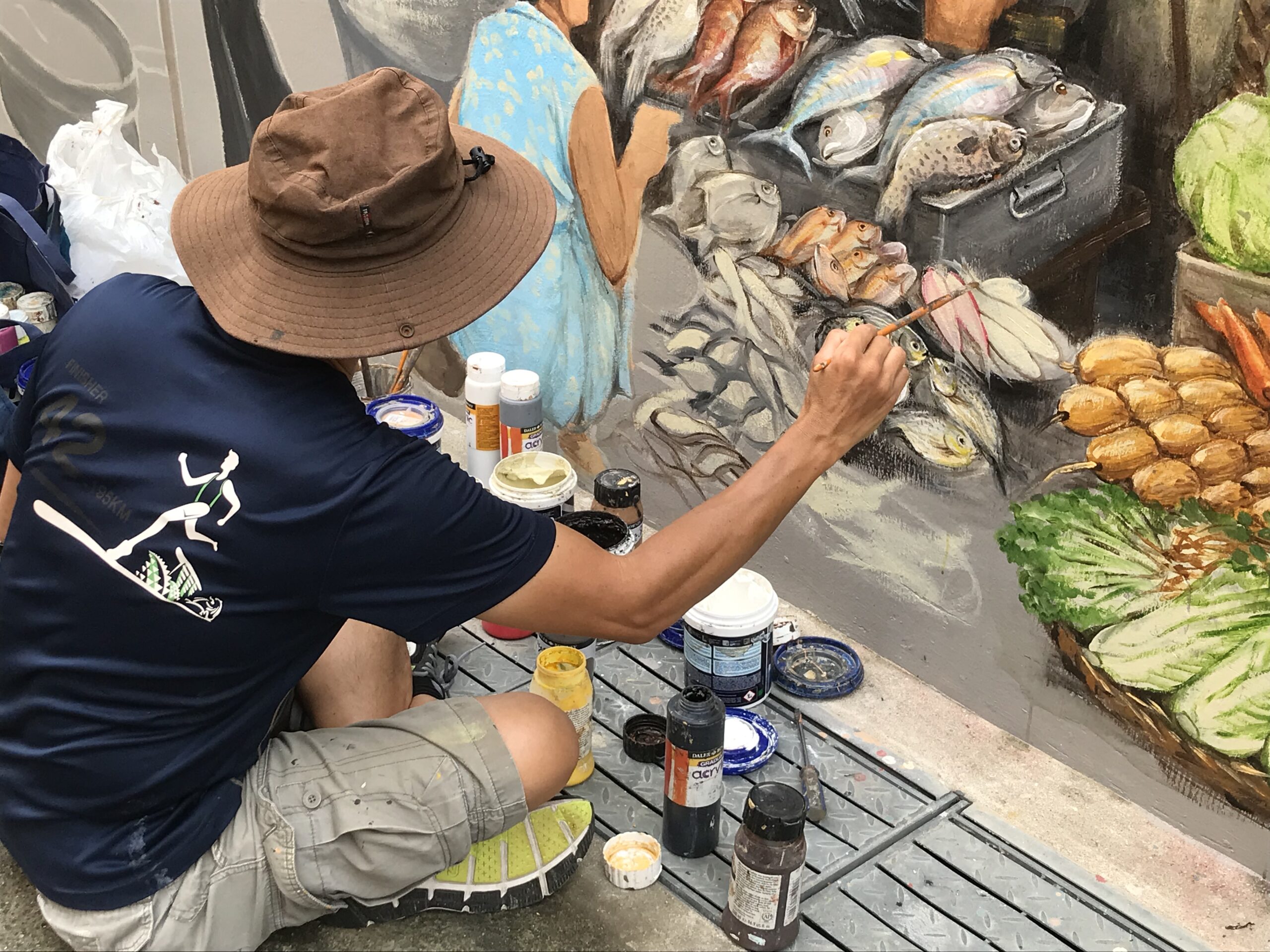
Yip joined the creative field relatively late in life. The former finance director worked in the corporate world for decades before pursuing his childhood passion for art.
“I worked in accounting and finance for over 25 years,” he recalled. “After I took care of the main obligations, I decided to pursue my own development.”
Encouraged by his family, the self-taught artist started painting canvases. His first mural was done in 2015, when he persuaded the owner of a property on Everton Road to let him paint a wall for free. Yip’s depictions of a traditional barbershop and ‘Amah,‘ a term historically used for female housemaids, spread through the modern platforms of social media. He received his first mural commission later that year.
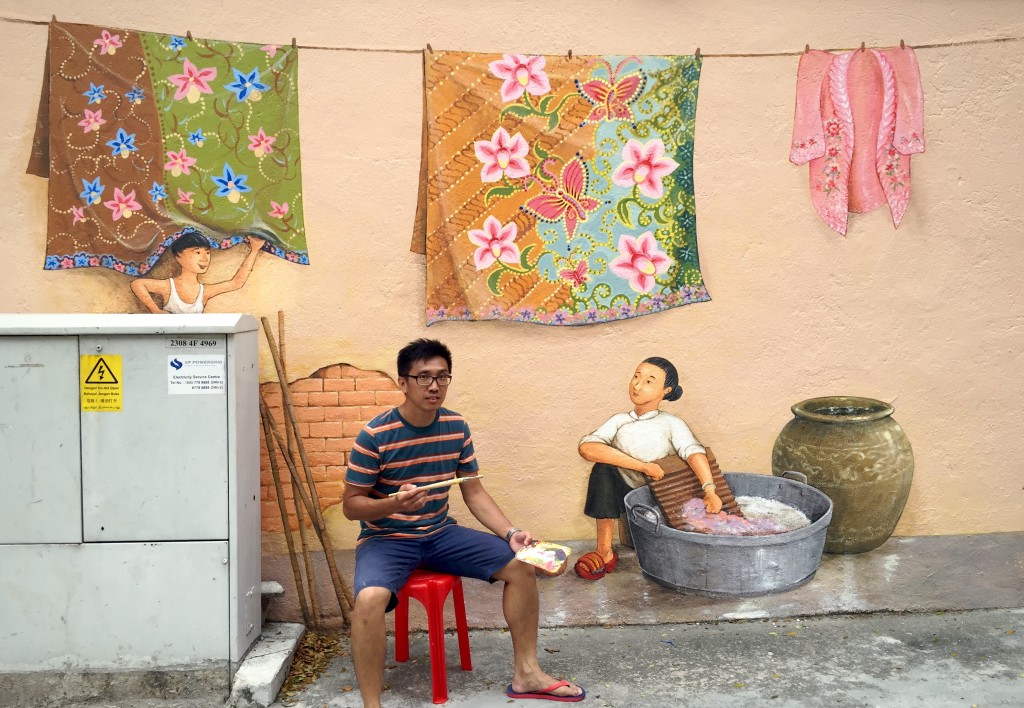
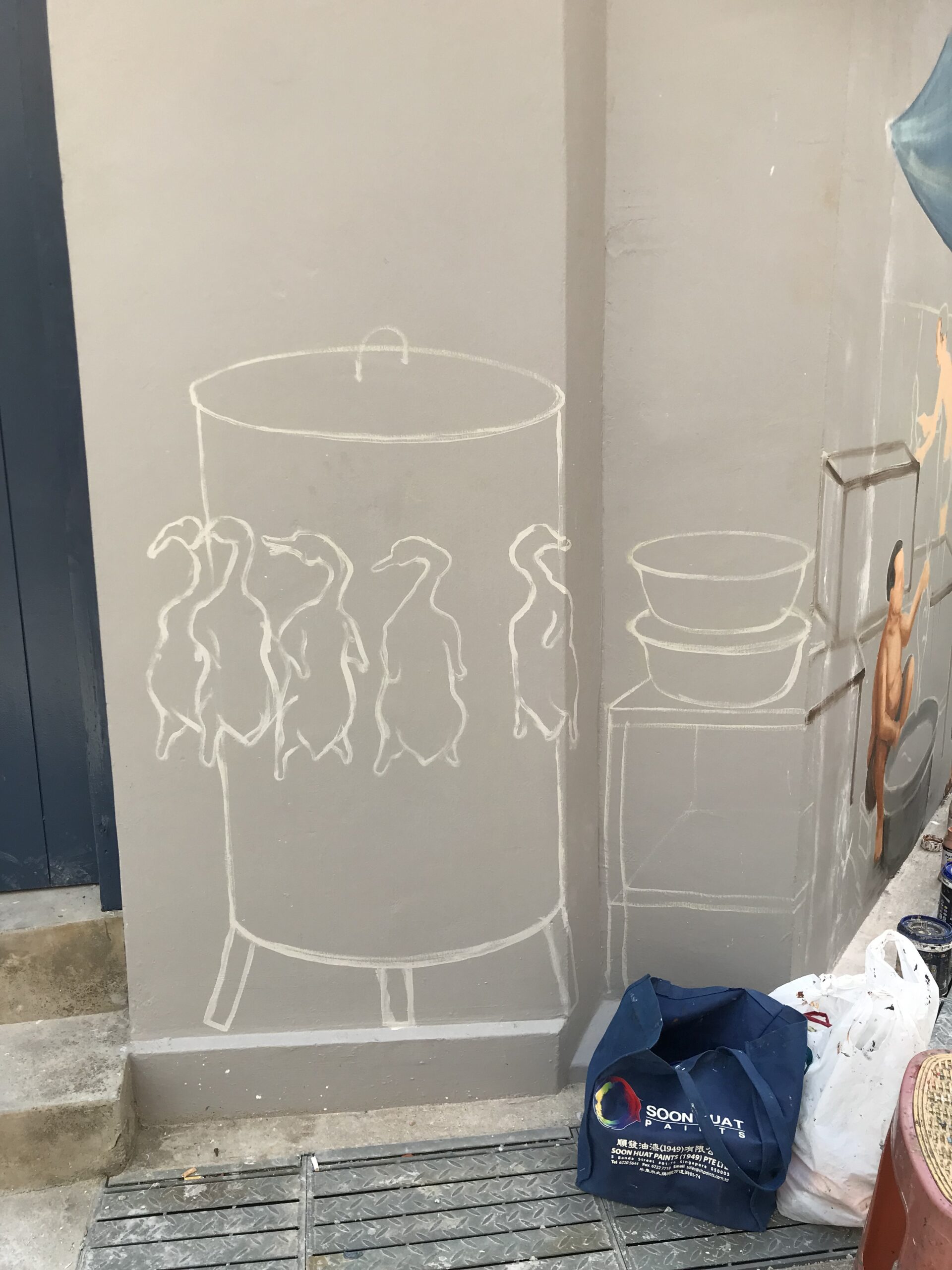
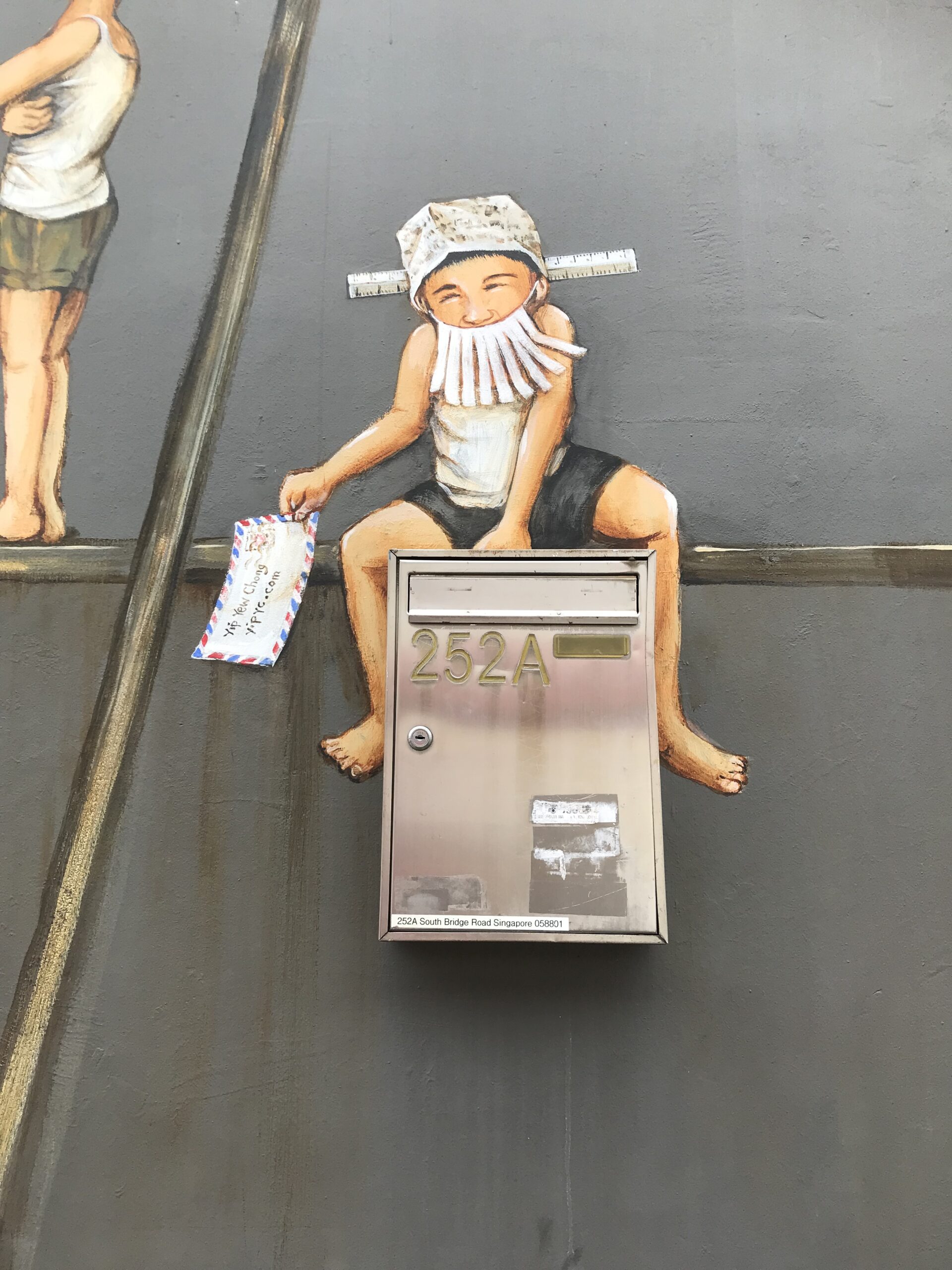
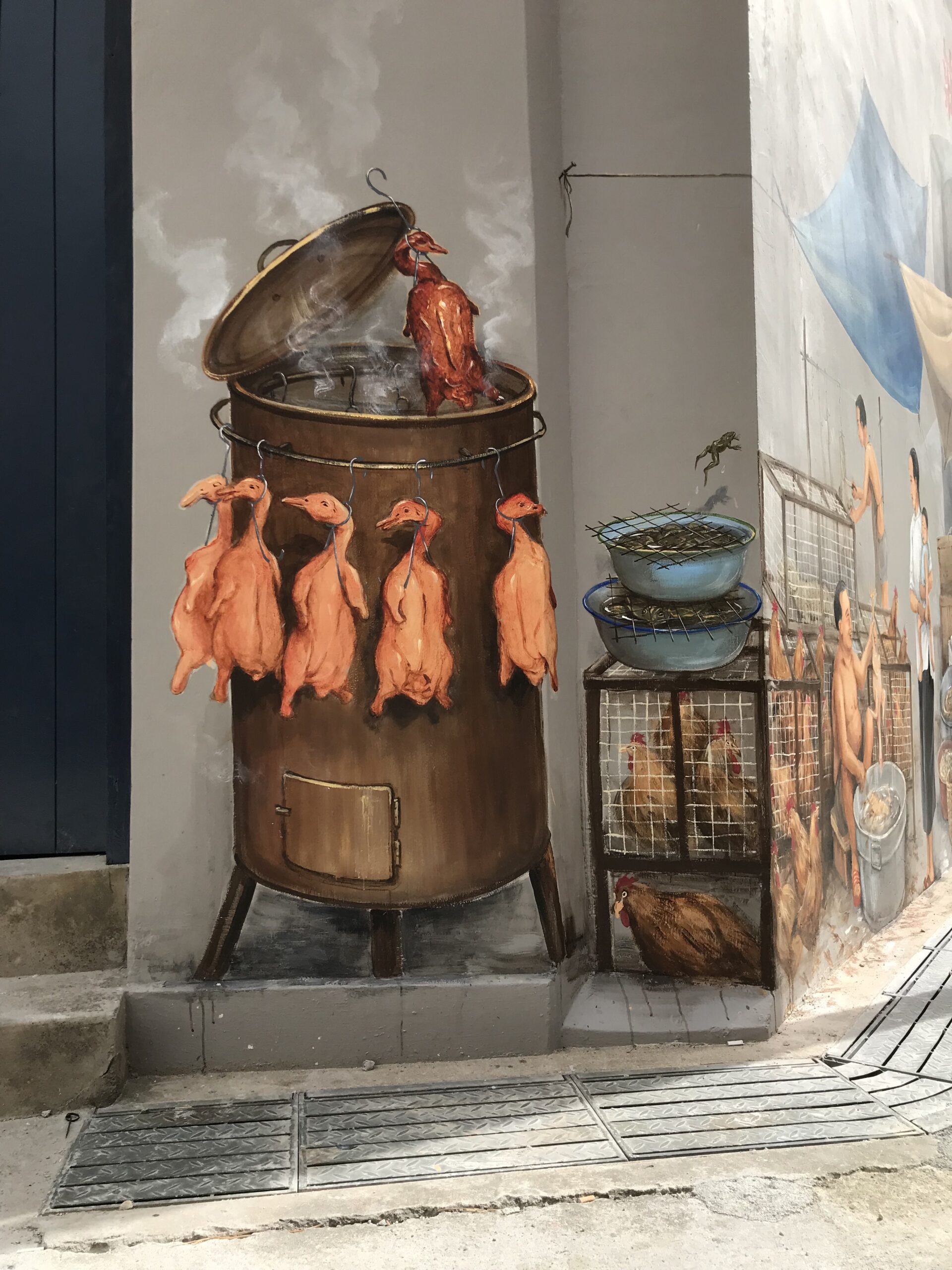
“This type of art is accessible,” Yip explained. “You don’t have to always go into a private home or gallery. It’s very compelling to tell the story on the streets and people feel like they can go anytime, anywhere.”
Many of Yip’s large wall paintings merge skillfully into their surroundings, incorporating windows or even a modern steel postbox into the narrative. But they depict images of a bygone Singapore, reviving memories of leafy plantations or the tracks of a now-converted railway station.
Sometimes the recollections are more personal. ‘The Home’ is a recreation of Yip’s first family home on Sago Lane, which is now a parking lot. In the painting, Yip’s mother cooks Nian Gao traditional new year sticky cake in the kitchen. Yip’s late seamstress grandmother sews a patchwork quilt in the living room, while on the shared wooden bed a young Yip plays with his siblings. Below him hangs a child’s drawing: a happy stick figure family. Next to it is a pot with a paintbrush.
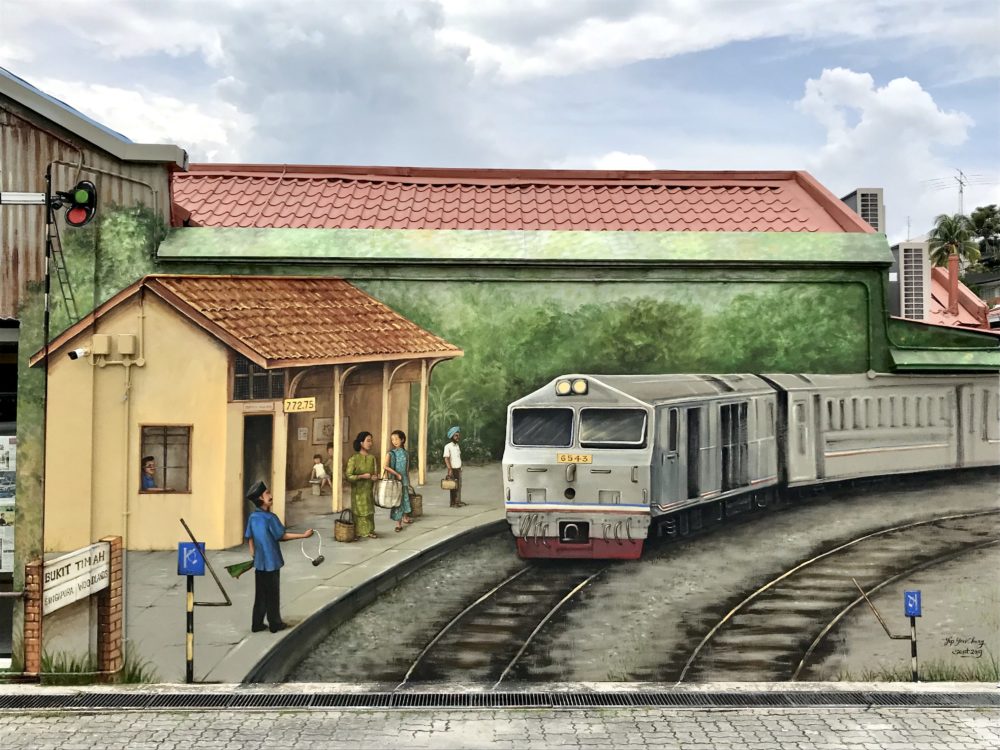
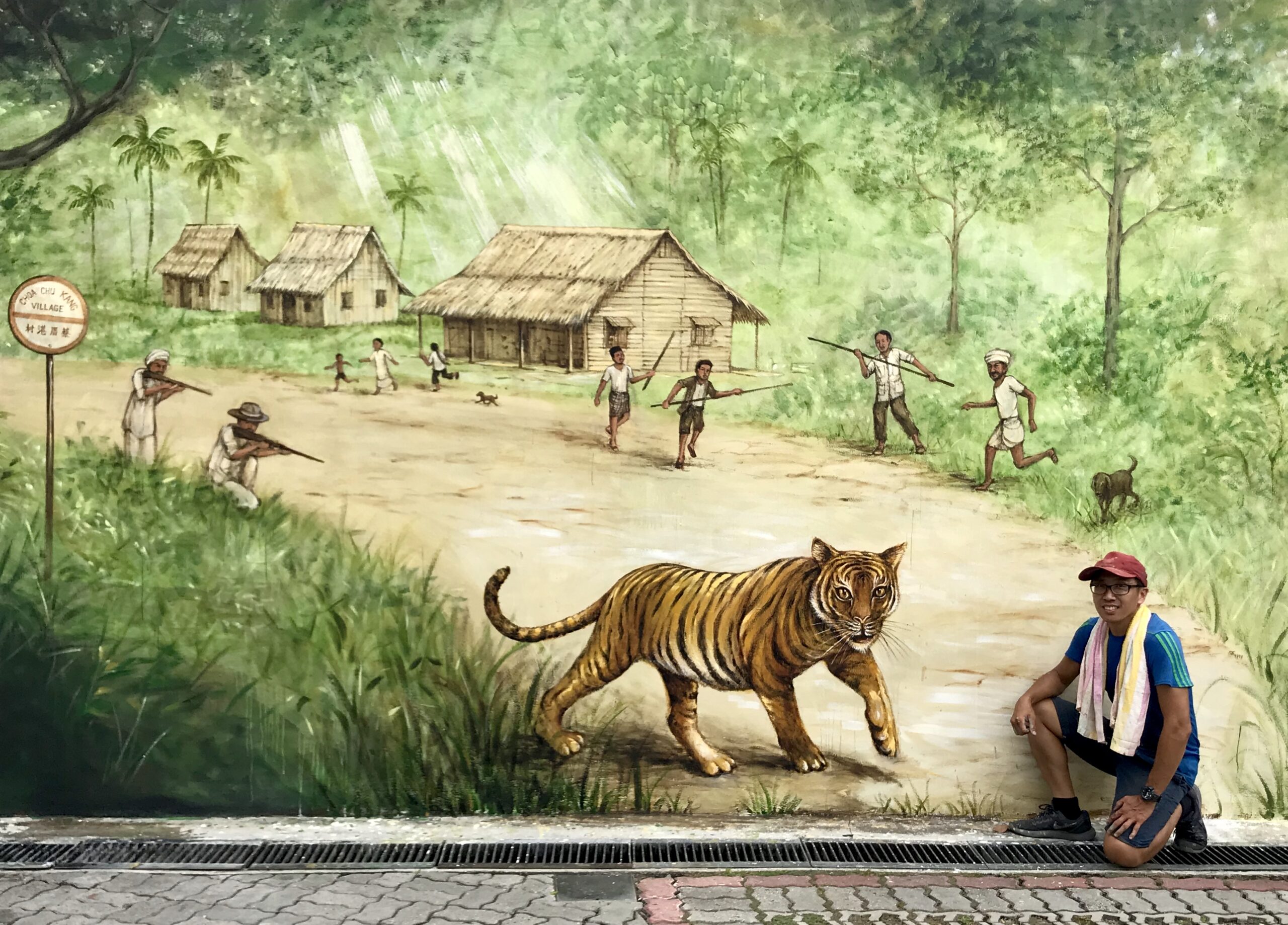
Whenever I paint things or local life people feel that they are part of it”
Yip Yew Chong
Like the moments they capture, the paintings themselves have an element of impermanence. Free from any protective treatment, they are at the mercy of the outside elements.
“After a few years, these will be forgotten,” Yip said.
The artist draws inspiration from his own memories, but for him the most important aspect of his paintings is the connection they build with the audience. He enjoys the scale of murals because the large size allows viewers to immerse themselves in the scenes.
Yip has painted in numerous Asian countries including Malaysia, India and Cambodia. Each time, he begins by familiarising himself with the local surroundings.
“Whenever I paint things or local life people feel that they are part of it,” he said. “[In] India it was the same. I walk around the streets in Delhi, then I work. The locals love it because they can recognise this is them.”
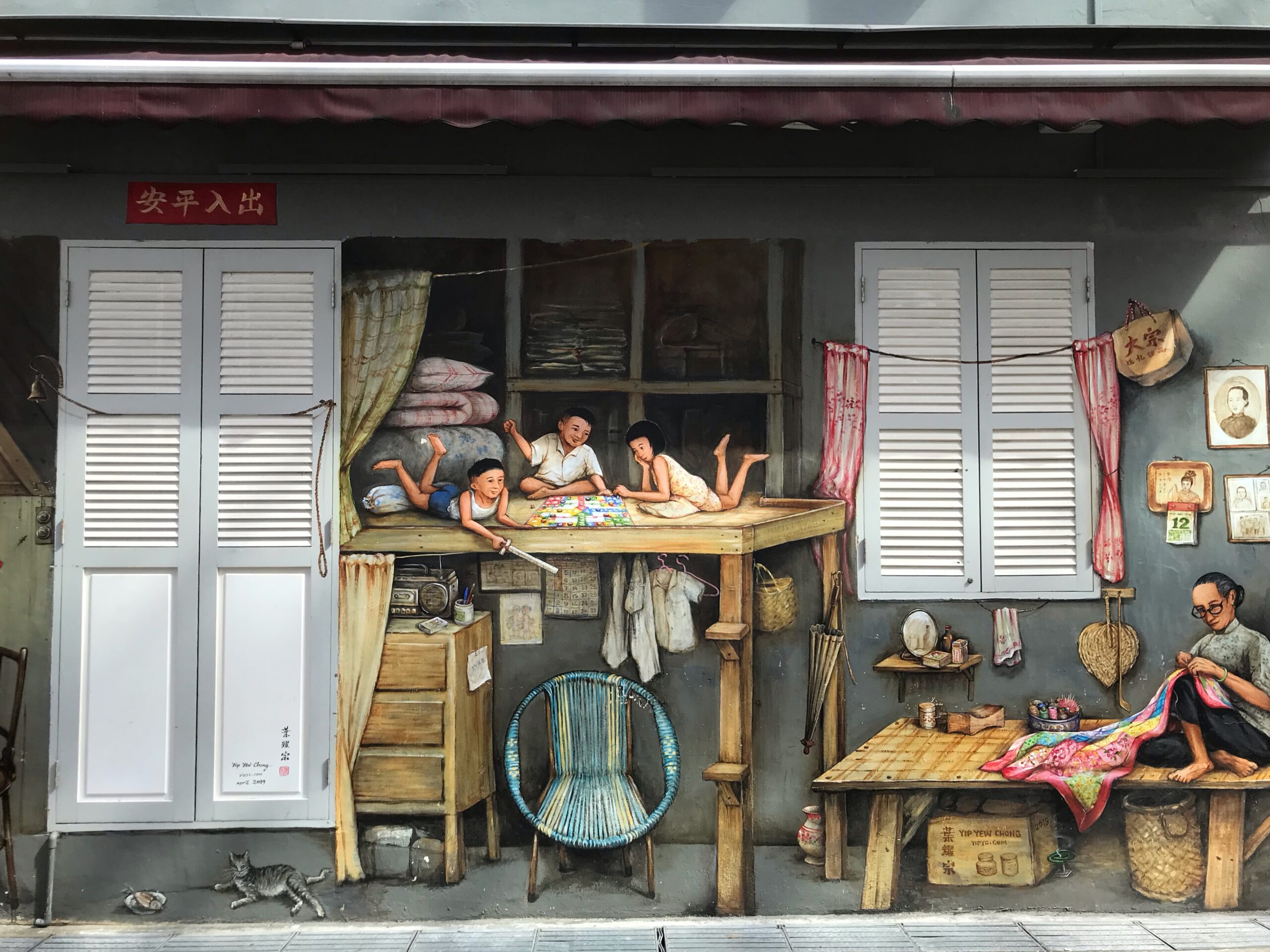
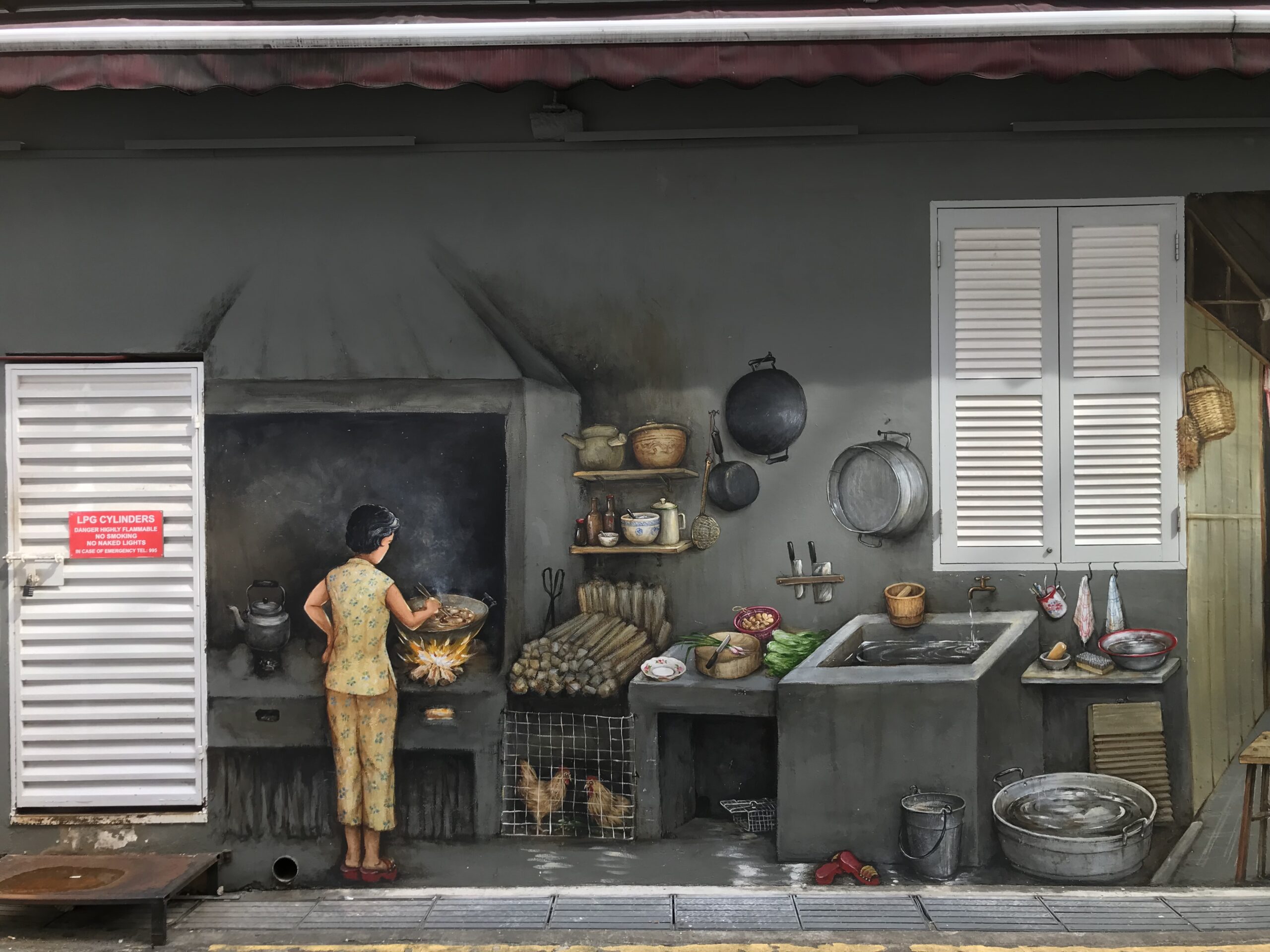
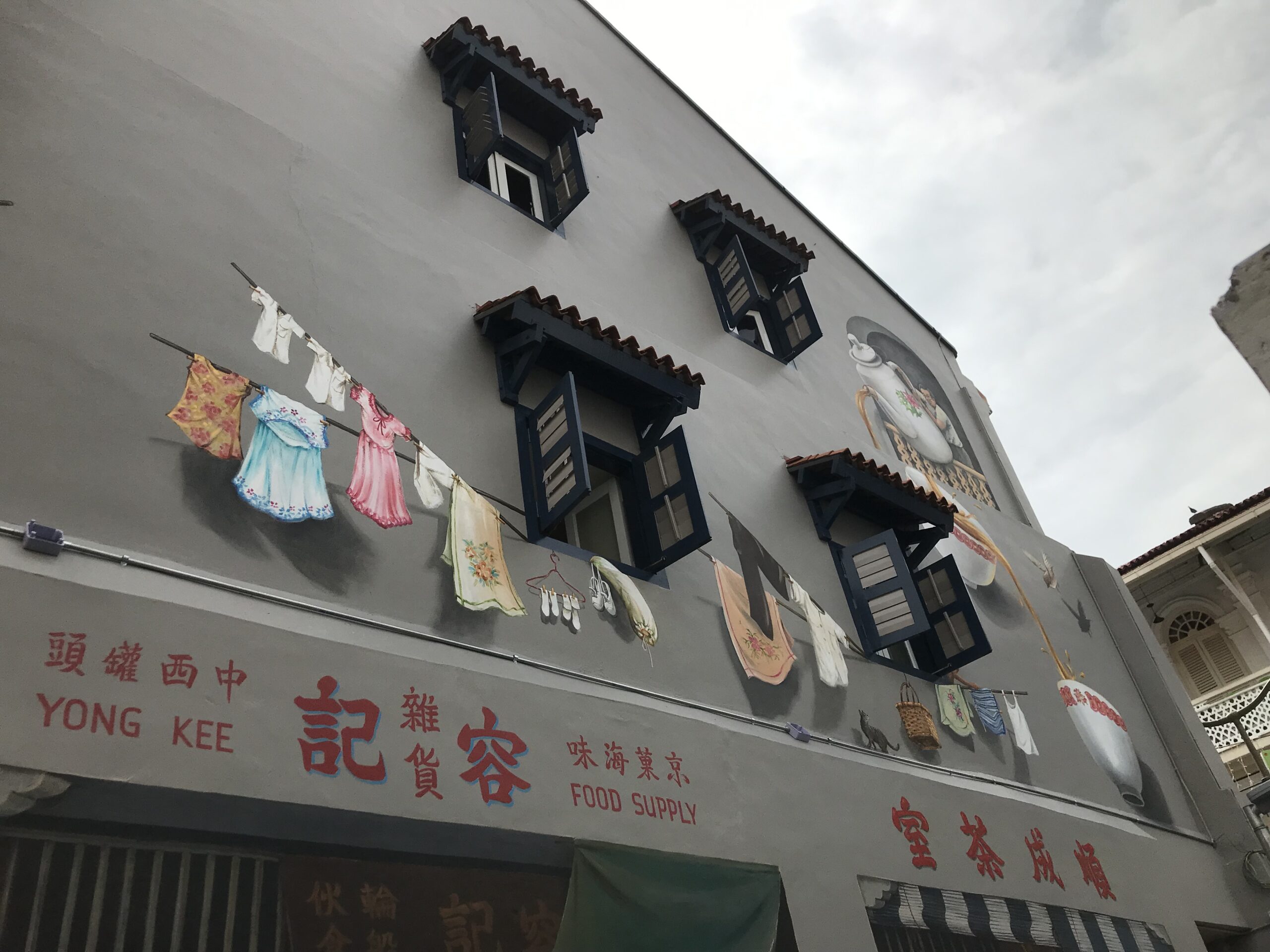
While he laughs off suggestions he’s become a local celebrity, recognition of Yip’s work helps promote Singapore’s heritage.
He held his debut solo exhibition last January at Singapore’s Art Porter’s Gallery, followed a month later by Yesteryear, a display of canvas paintings, digital artworks and original sketches at the Sofitel Hotel City Centre. To commemorate the Sofitel show, the hotel devised a special menu based around dishes from Yip’s own upbringing.
His reflections of the past can also assist viewers to preserve their own memories. The artist’s portrayals of Singapore’s historic kampungs (villages) were reproduced for the second edition of the National Heritage Board’s Collection Cares programme, which launched on 13 September. The initiative aims to give seniors greater access to art and the stimulation provided by creative works.
Alvin Tan, deputy chief executive (policy & community) of the National Heritage Board, said Yip’s paintings were chosen for their large format and their power to stir seniors’ recollections of their own childhoods.
The story of a street artist shot to fame recalls Banksy, the elusive British graffiti artist whose work recently fetched the equivalent of $12.4 million in auction house Sotheby’s first cryptocurrency sale. Their work netted 3,093 EHT, the abbreviation for cryptocurrency Ether.
Unlike his secretive British counterpart, Yip is as accessible as his art. While working on a new piece, his public Facebook page updates his location and progress for more than 7,600 followers. He is affable and engaging with the spectators who gather to watch him work, pausing to pose for photos and answer questions.
His relationship with Art Porters started when the gallery’s co-founder, Guillaume Levy-Lambert, found the artist painting on a neighbourhood wall and struck up a conversation.
“I don’t mind [the attention],” Yip said through a smile. “It’s all part of the fun.”
Like his most recent piece, Yip’s murals are mostly private commissions from house owners, businesses or communities. As his reputation grows, clients seek him out to decorate their walls with his distinct broad brushstrokes and nostalgic snapshots. The growing popularity of the art and the artist benefits the wider area.
“There are a lot of people who came to watch him paint, especially on the weekends,” recalled Anil Shrestha, who owns a clothing store backing onto Yip’s latest mural. “Then they see my shop. That’s why I keep the door open.”
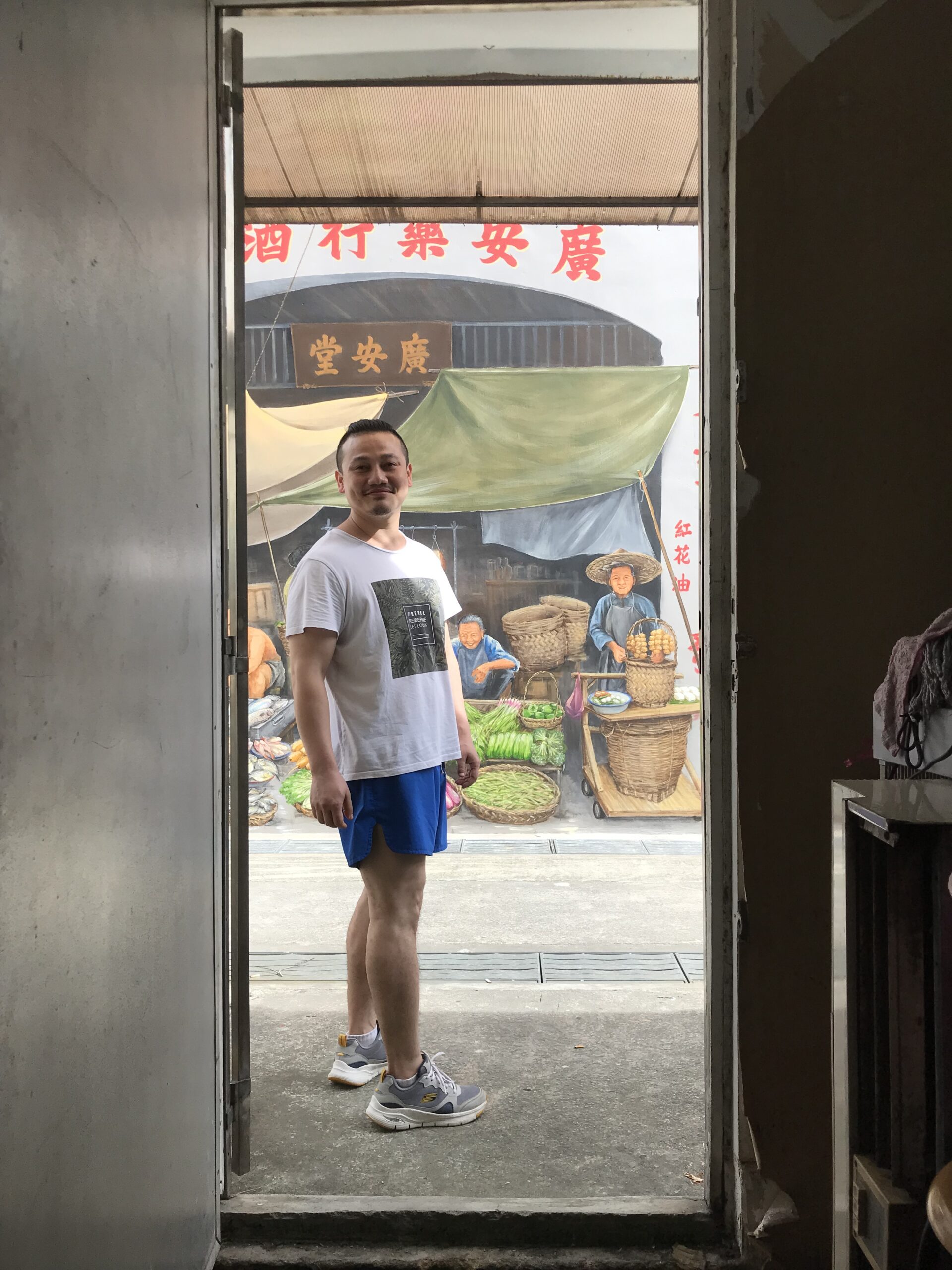
In a country with strict restrictions on public art, private commissions also allow street artists a measure of public free expression within the bounds of government control. Under the country’s 1966 Vandalism Act, any painting on public or private property without the owner’s written consent could result in a fine of $1,462.21 (SGD 2,000) or a prison sentence.
“I think it’s important that people get access to this form of art,” said Victor Huang, co-founder of Heaven Spot, a graffiti art studio offering private sessions and blank walls behind closed doors. “Publicly visible works could pave the way towards government and landowners opening up to street art in the future.”
Yip is open about his craft, even showing photos of the cranes he operates himself to reach and decorate the windows on upper floors. The one element he remains tight-lipped about is money.
“Priceless,” he joked when asked how much the current work would earn.
For an artist whose paintings are heavily inspired by the past, Yip is determinedly forward thinking. While admitting he misses the teamwork of his previous corporate life, he was quick to add, “I definitely don’t miss conference calls… especially now”
Today’s landscape also holds more opportunities for those pursuing creative career paths, he said.
“In the old days it was harder to become an artist. We didn’t even have proper art schools, and [there were] fewer people buying art,” he pointed out. “But now the demand, [the number of] collectors, the whole industry is developing. It’s more accessible like this.”
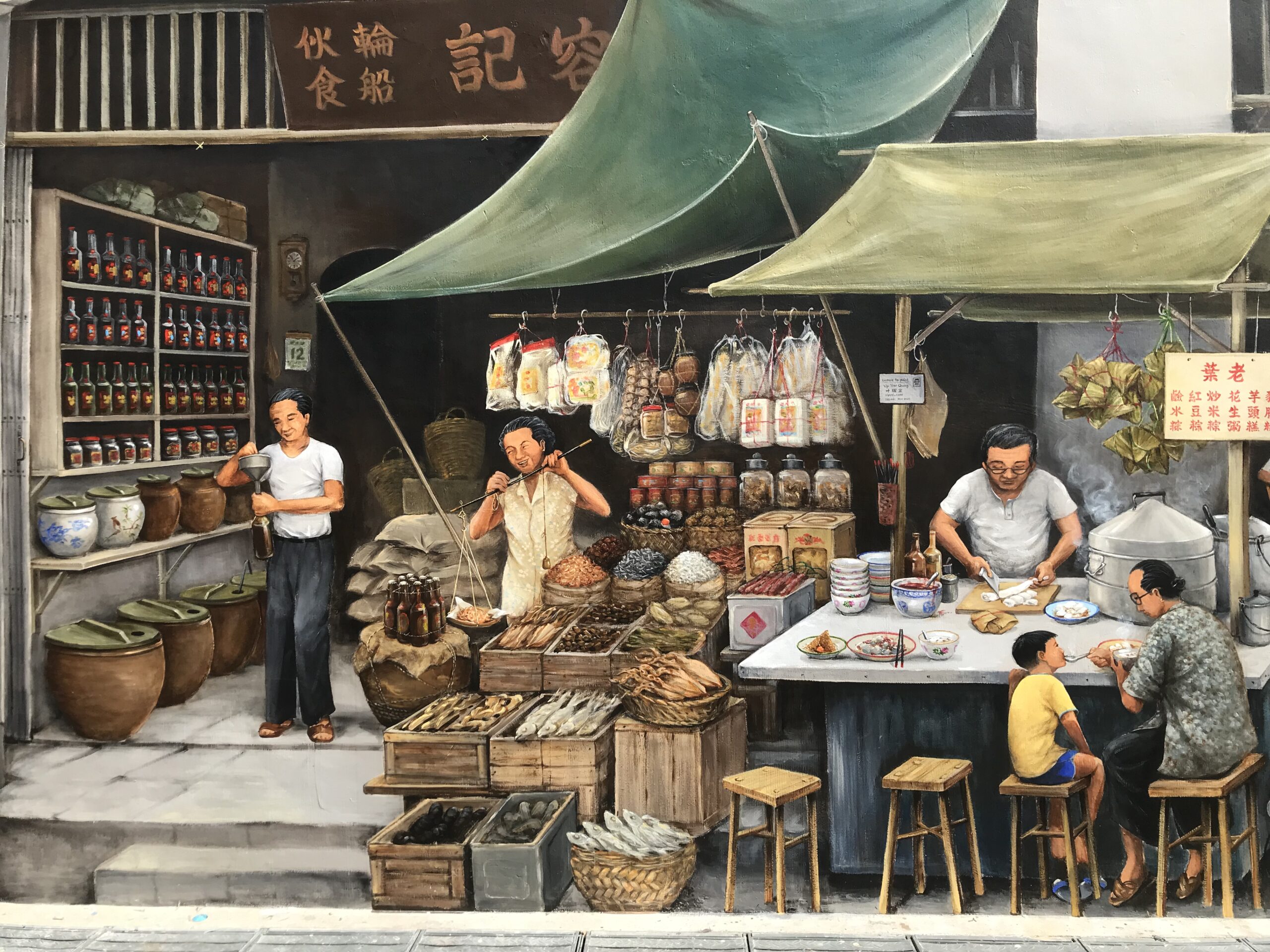
Yip is equally pragmatic when discussing Singapore’s rapid urban development, which has wiped out many of the scenes he captures. Looking forward, he plans to move his focus away from wall painting.
“I’m trying not to do too many murals. [There are] too many already,” he said, noting his ambition to venture into filmmaking. He has already updated many of his paintings with digital animations on his social media accounts.
“We have progressed,” Yip said. “I don’t think we should be living in dilapidated houses, in hygienic, unsafe conditions. Of course, we lost some traditions. [And] we modified some into what we practice today. The spirit is still there, we miss it, but it’s evolved. I don’t cling onto the past.”
Text and photos by Amanda Oon


